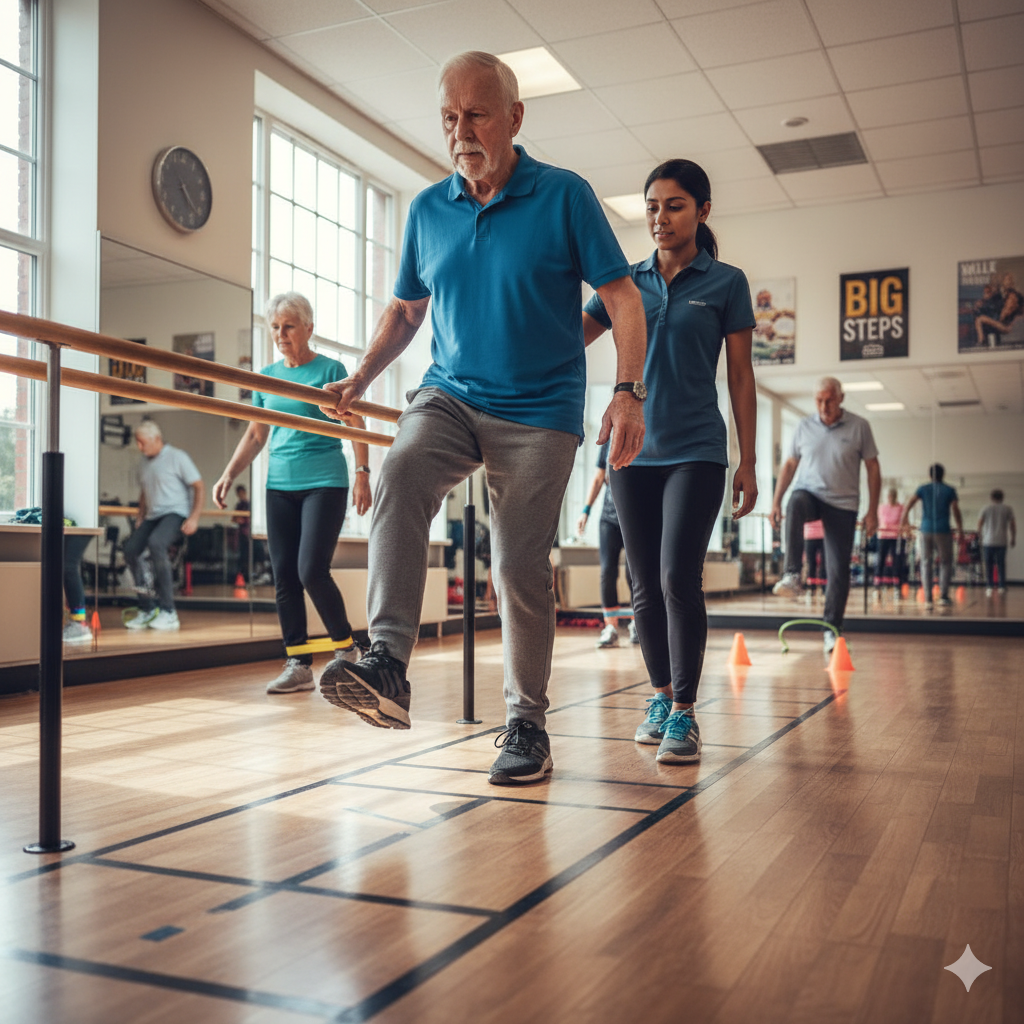

Let’s talk about the shuffle. You know the one — short, hesitant steps that feel like your feet are stuck in wet cement. The Parkinson’s shuffle is common, but it doesn’t have to be permanent.
With the right exercises and some practice, you can walk with more purpose, stability, and confidence. Let’s get those feet moving like they mean it.
Parkinson’s affects the motor system, slowing down signals from your brain to your legs. That can cause:
Together, these changes create the classic Parkinson’s shuffle — and a higher risk of falls.
Gait training exercises help retrain your brain and body to walk more naturally. They target posture, stride length, rhythm, and foot clearance.
The goal is to make walking more automatic again, and yes, it’s possible!
Why it helps: Reinforces larger movements and rhythm
Why it helps: Improves balance and stride precision
Why it helps: Builds leg strength and foot-lifting awareness
Why it helps: Improves lateral movement and coordination
Why it helps: Provides visual cues to trigger bigger steps
Consistency is more important than intensity. Keep it regular and your progress will show.
The shuffle doesn’t define you. With a bit of focus and a few daily steps (literally), you can retrain your body to walk more smoothly and safely.
So lace up those sneakers, pick a tune with a good beat, and let each step remind you: you’re moving forward, and Parkinson’s doesn’t get to lead.

